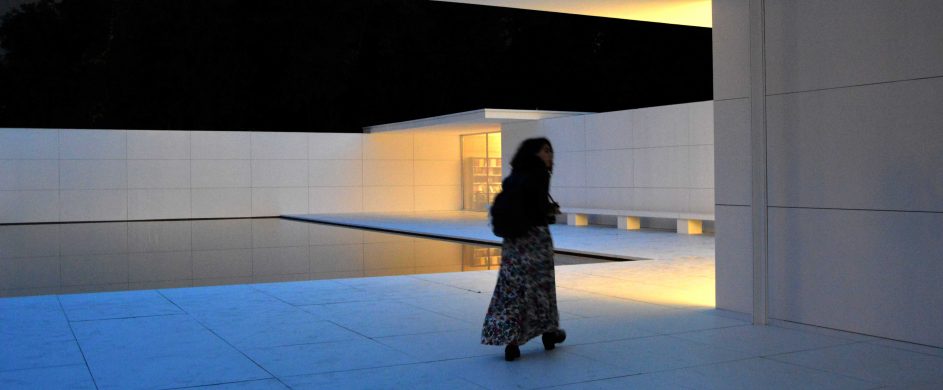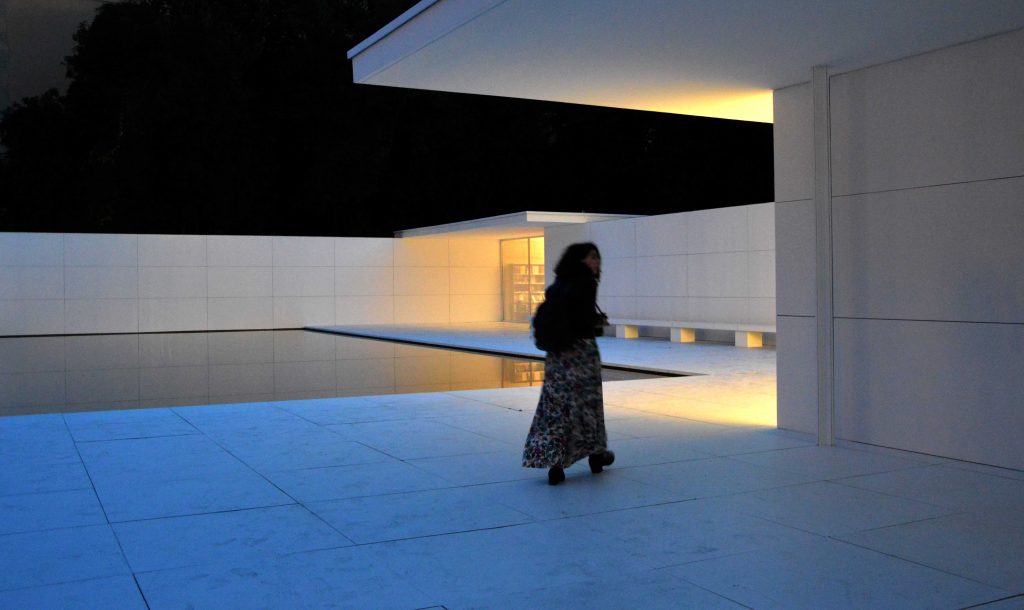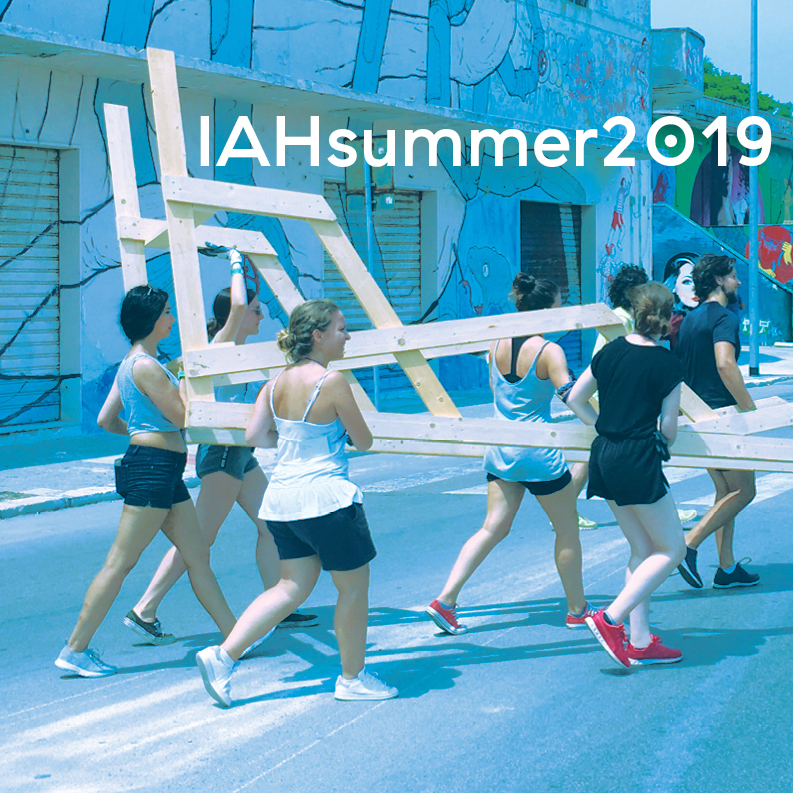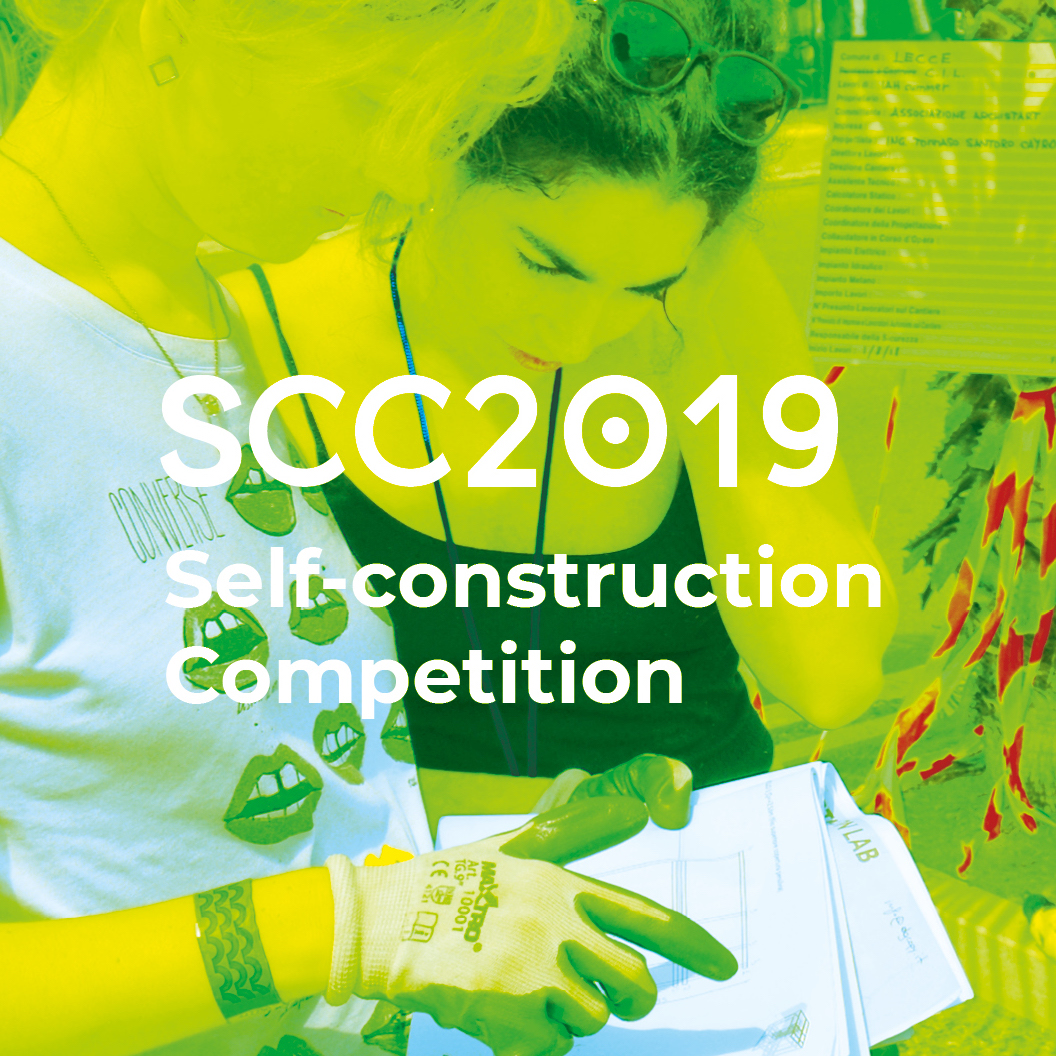MMM: Mies Missing Materiality
It is almost impossible to think of some architectural works separating them of their materiality- their rough textures, their slim surfaces or their edgy corners. Barcelona pavilion is just one of the cases, where materiality is as important as the building itself. I had the chance to experience it on November 2017, being totally white, losing every trace of its unique characteristics, as part of a temporal exhibition curated by Fundació Mies van der Rohe, in collaboration with the architects Anna & Eugeni Bach. ‘This simple act turns the Pavilion into a 1:1 scale mock-up, a representation of itself that opens the door to multiple interpretations about aspects like the value of the original, the role of the white surface as an image of modernity and the importance of materiality in the perception of space’ stated the architects. More on: Miesbcn.com
This experience made me question the real impact that materials have upon us and the way architects should use them, in order to ignite feelings and stimulate our senses. Thinking about it, I remembered that one of my oldest memories as a child was passing through a very narrow and dark tunnel, in the in island of Rhodes, which led to a lake with springs: a dimly lit corridor 150m long, my body being pressed against the harsh concrete wall, water coming into contact with my feet. Closing my eyes, I can still reconstruct this place though I never visited it again. Skin touches and body remembers -and this fusion of architecture, space and time penetrates our consciousness, perhaps forever.
///
È quasi impossibile pensare ad alcuni lavori architettonici privati della loro materialità, delle loro trame ruvide, delle loro superfici sottili o dei loro angoli spigolosi. Il padiglione di Barcellona è solo uno dei casi in cui la materialità è importante quanto l’edificio stesso. Ho avuto la possibilità di vederlo a novembre 2017: totalmente bianco, aveva perso ogni traccia delle sue caratteristiche uniche, come parte di una mostra temporanea a cura di Fundació Mies van der Rohe, in collaborazione con gli architetti Anna & Eugeni Bach.
“Questo semplice atto trasforma il padiglione in un modello in scala 1:1, una rappresentazione di se stesso che apre la porta a molteplici interpretazioni su aspetti come il valore dell’originale, il ruolo della superficie bianca come immagine della modernità e l’importanza della materialità nella percezione dello spazio’ hanno dichiarato gli architetti. (maggiori informazioni su: https://miesbcn.com/project/mies-missing-materiality/)
Questa esperienza mi ha fatto dubitare del reale impatto che i materiali hanno su di noi e del modo in cui gli architetti dovrebbero usarli, al fine di accendere i sentimenti e stimolare i nostri sensi. Pensandoci, mi è tornato in mente uno dei primi ricordi della mia infanzia quando stavo passando attraverso un tunnel molto stretto e buio, nell’isola di Rodi, che portava a un lago con sorgenti: un corridoio scarsamente illuminato lungo 150 metri, il mio corpo era schiacciato contro il duro muro di cemento, l’acqua che entra in contatto con i miei piedi. Chiudendo gli occhi, posso ancora ricostruire questo posto anche se non l’ho mai più visitato. La pelle tocca e il corpo si ricorda – e questa fusione di architettura, spazio e tempo penetra nella nostra coscienza, forse per sempre.
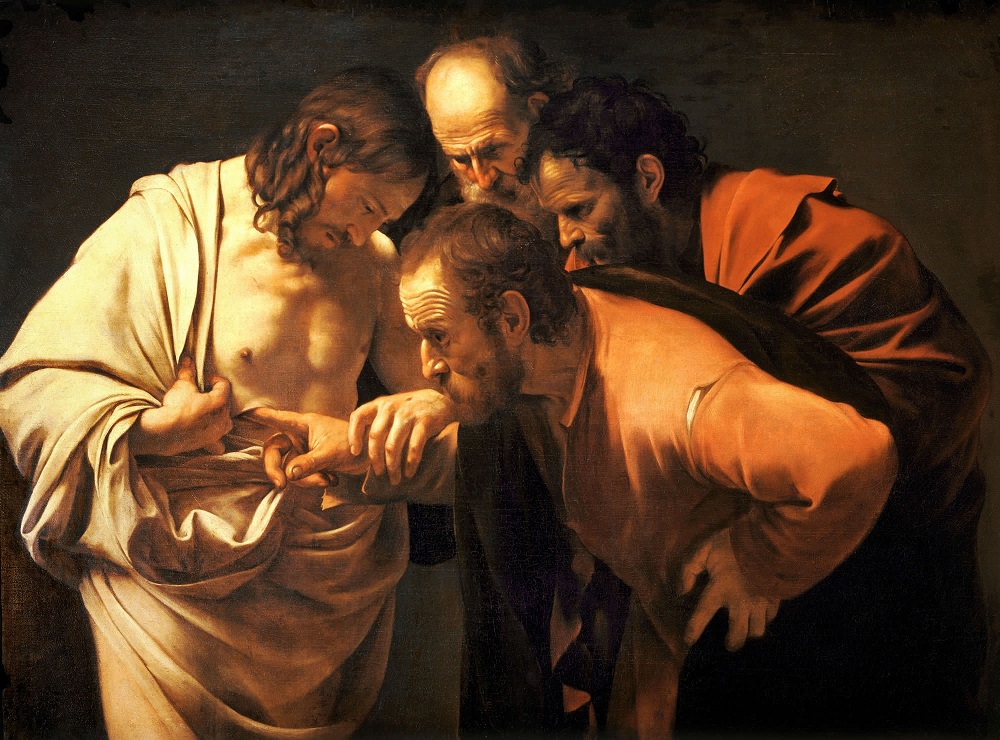
Undoubtedly, the role of materials in architecture changed and evolved over time, yet much can be learned from the ways they have been used till know, both ideologically but also practically. I would like to discuss briefly some examples.
///
Indubbiamente, il ruolo dei materiali in architettura è cambiato e si è evoluto nel tempo, ma si può imparare molto dai modi in cui sono stati utilizzati fino ad ora, sia ideologicamente ma anche praticamente. Vorrei discutere brevemente alcuni esempi.

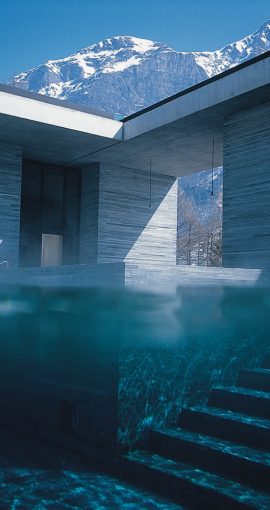
Peter Zumthor's Bruder Klaus Field Chapel Through the Lens of Aldo Amoretti | The Therme Vals / Peter Zumthor
Peter Zumthor: A sensuous craftsmanship
‘Each material has a thousand meanings and each material is already a whole world.’ (1)
Warm solid wood in St.Benedict’s Chapel, local stone in Thermal Baths, burnt solid tree trunks in Bruder Klaus Chapel, concrete with integrated geothermal heating system in Kunsthaus Art Museum – P.Zumthor has experimented with different materials in various projects, yet the basic ideas that define his design can be found in all of them: ‘I pay all my attention in my work to conceive my buildings as bodies, building them as an anatomy and a skin, as a mass, a membrane, as matter or cover, fabric, silk and shiny steel’. (2)
///
‘Ogni materiale ha mille significati e ogni materiale è già un mondo intero.’ (1)
Legno massello caldo nella cappella di San Benedetto, pietra locale nei bagni termali, tronchi di albero massiccio bruciato nella cappella di Bruder Klaus, cemento con sistema di riscaldamento geotermico integrato nel Kunsthaus Art Museum- P.Zumthor ha sperimentato diversi materiali in vari progetti, ma le idee di base che definiscono il suo design si possono trovare in tutte: “Nel mio lavoro dedico tutta la mia attenzione a concepire i miei edifici come corpi, costruendoli come un’anatomia e una pelle, come una massa, una membrana, come materia o copertura, tessuto, seta e acciaio lucido ‘. (2)
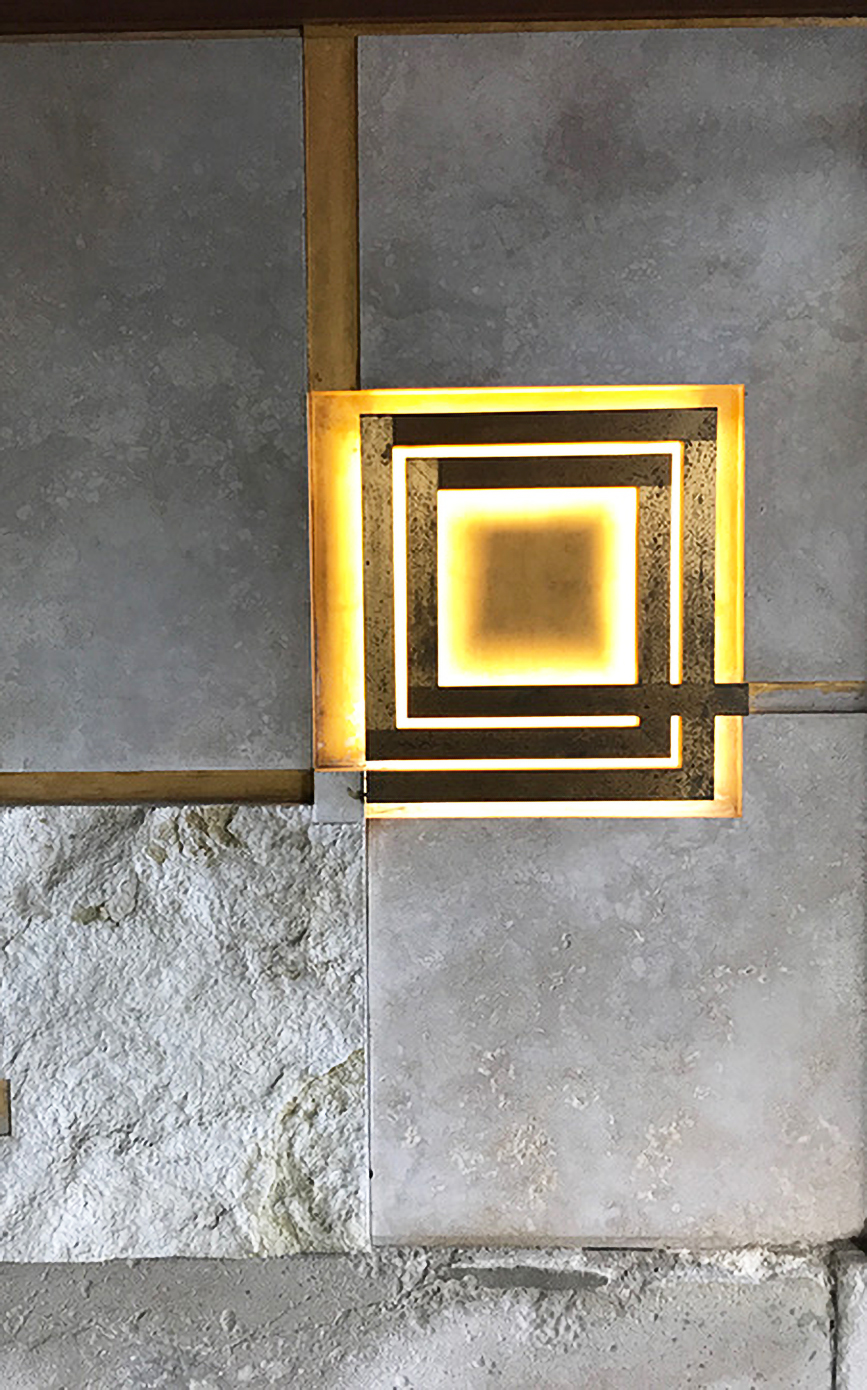
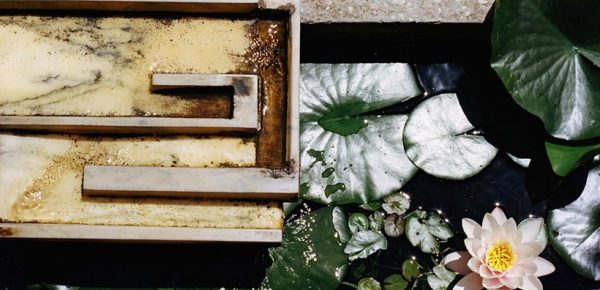
former Olivetti showroom in Venice | garden of palazzo Querini stampalia designed by architect Carlo Scarpa
Carlo Scarpa: Details for the eye-Stimuli for the hand
What I particularly appreciate in the work of Scarpa is his tireless and persistent effort in bringing the eye and the body closer to the object and the building closer to the nature as well: Eyes are invited to stimulate muscular and tactile sensations. Small, unique details that encourage you to explore their surfaces –this kind of details that make you understand the importance of a personalized touch. Sculpture and function blend in one holistic approach.
///
Ciò che apprezzo particolarmente nel lavoro di Scarpa è il suo sforzo instancabile e persistente nel portare l’occhio e il corpo più vicino all’oggetto e l’edificio più vicino alla natura: gli occhi sono invitati a stimolare sensazioni muscolari e tattili. Piccoli dettagli unici che ti incoraggiano ad esplorare le loro superfici: questi tipi di dettagli ti fanno comprendere l’importanza di un tocco personalizzato. La scultura e la funzione si fondono in un unico approccio olistico.
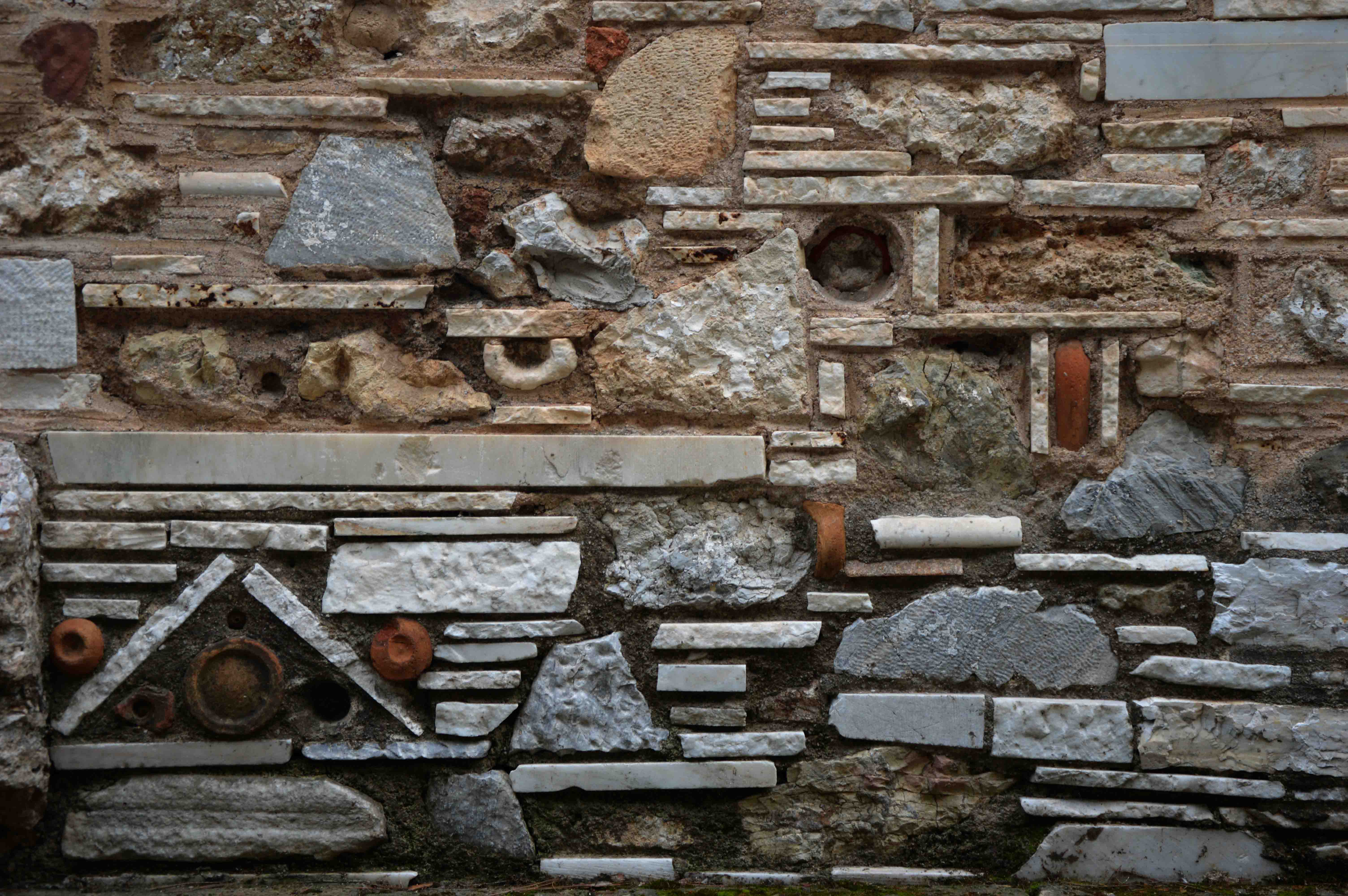
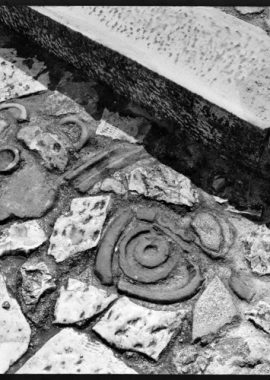
images a: personal archive | images b: Dimitris Pikionis Acropolis - Philopappou, detail of the street
Dimitris Pikionis: Fragments and memories
One of the most important works of the Greek architect was the creation of a network of paths and resting points in front of the hill of Acropolis. This project reveals a unique dynamic by combing segments of the past with new elements: The paths craved were based on ancient routes and were selected carefully after in situ visits to the field. Many of the materials used, such as clay, stone and marble pieces derived from neoclassical buildings which were demolished around that time. Thus, new materials (e.g. concrete and bricks) intertwine with ‘spolia’ of the past in a mosaic of memories and time. (3)
‘The business of Architecture is to establish emotional relationships by means of raw materials. Passion can create drama out of inert stone’. Le Corbusier (1986, Towards a New Architecture, p. 151)
///
Una delle opere più importanti dell’architetto greco fu la creazione di una rete di sentieri e punti di sosta di fronte alla collina dell’Acropoli. Questo progetto rivela una dinamica unica combinando segmenti del passato con nuovi elementi: i percorsi desiderati erano basati su rotte antiche e sono stati accuratamente selezionati dopo le visite in loco sul campo. Molti dei materiali utilizzati, come pezzi di argilla, pietra e marmo derivati da edifici neoclassici che sono stati demoliti in quel periodo. Così, nuovi materiali (ad esempio calcestruzzo e mattoni) si intrecciano con le spoglie del passato in un mosaico di ricordi e tempo. (3)
Il business dell’architettura è stabilire relazioni emotive attraverso le materie prime. La passione può creare il dramma con la pietra inerte “. Le Corbusier (1986, Verso una nuova architettura, pag 151)

To sum up, the role and importance of materials include much more than their structural properties- they are also associated with aesthetic, visual, and haptic qualities which are different in each building and meanwhile connected with specific social, cultural and technical backgrounds. Applying the right materials, therefore, represents a truly demanding task that requires not only knowledge and experience on the various material properties, but also sensitivity and intuition.
///
Riassumendo, il ruolo e l’importanza dei materiali includono molto più delle loro proprietà strutturali – sono anche associati a qualità estetiche, visive e tattili che sono diverse in ogni edificio e nel frattempo connesse a contesti sociali, culturali e tecnici specifici. Applicare i materiali giusti rappresenta quindi un compito veramente impegnativo che richiede non solo la conoscenza e l’esperienza sulle varie proprietà dei materiali, ma anche sensibilità ed intuito.

